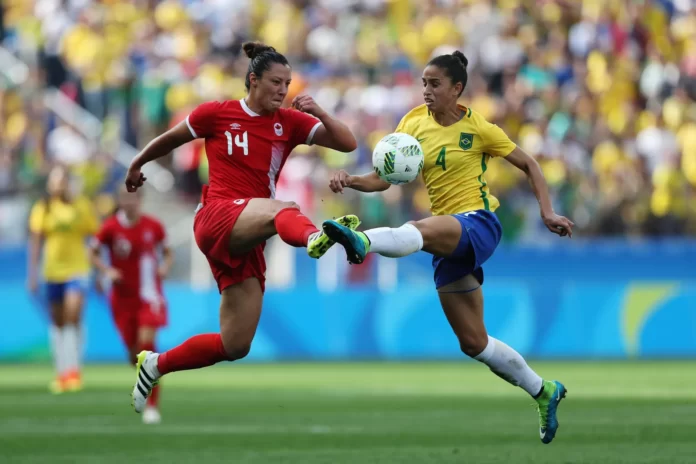Here Is The Easy Money-Making Trick Everyone Is Talking About! Learn More Here!
When it comes to comparing the popularity of men’s football and women’s football, there is a noticeable disparity.
Despite the growing interest and success of women’s football in recent years, it still lags behind its male counterpart in terms of popularity.
This post explores some of the reasons why women’s football has not gained the same level of popularity as men’s football.
- Official Song of U-20 Women’s World Cup Costa Rica 2022
- FIFA World Cup Referee Salaries: How Much Do They Earn?
Historical Factors
One of the key reasons for the disparity in popularity between men’s and women’s football can be traced back to historical factors.
Football has traditionally been seen as a male-dominated sport, with deep-rooted gender stereotypes and societal expectations.
For many years, women’s participation in football was discouraged and even banned in some countries.
This lack of historical support and exposure has contributed to the slower growth of women’s football and its subsequent lower popularity.
Limited Media Coverage
Media coverage plays a vital role in promoting and popularizing any sport.
Unfortunately, women’s football has historically received limited media coverage compared to men’s football.
This lack of visibility in the media has made it challenging for women’s football to attract a larger audience and gain the same level of popularity.
Without adequate exposure, it becomes difficult for fans to connect with the players, teams, and the overall excitement of the sport.
Investment and Funding
Another significant factor that has hindered the growth of women’s football is the disparity in investment and funding.
In many cases, women’s football receives significantly less financial support compared to men’s football.
This lack of investment affects various aspects of the sport, including infrastructure, training facilities, coaching, and marketing.
Without sufficient resources, it becomes challenging for women’s football to compete at the same level as men’s football and attract a larger fan base.
Perception and Stereotypes
Societal perceptions and stereotypes surrounding women’s football have also contributed to its lower popularity.
There is a common misconception that women’s football is inferior to men’s football in terms of skill and entertainment value.
These stereotypes undermine the achievements and abilities of women footballers and discourage potential fans from giving the sport a chance.
Overcoming these perceptions and challenging the stereotypes is crucial for the growth and popularity of women’s football.
Lack of Role Models
Role models play a significant role in inspiring and motivating individuals to take up a sport.
In the case of women’s football, the lack of prominent and widely recognized female footballers has been a hindrance to its popularity.
While there are exceptional women footballers, their visibility and recognition are often overshadowed by their male counterparts.
Without strong and visible role models, it becomes more challenging for young girls and aspiring athletes to envision themselves in the world of women’s football.
Conclusion
Despite the growing interest and success of women’s football, it still faces challenges in achieving the same level of popularity as men’s football.
However, it is essential to recognize the progress that has been made and continue working towards creating a more inclusive and equal playing field for women’s football.
With increased support, investment, and promotion, women’s football has the potential to become as popular and celebrated as men’s football in the future.
This article was updated 1 week ago
